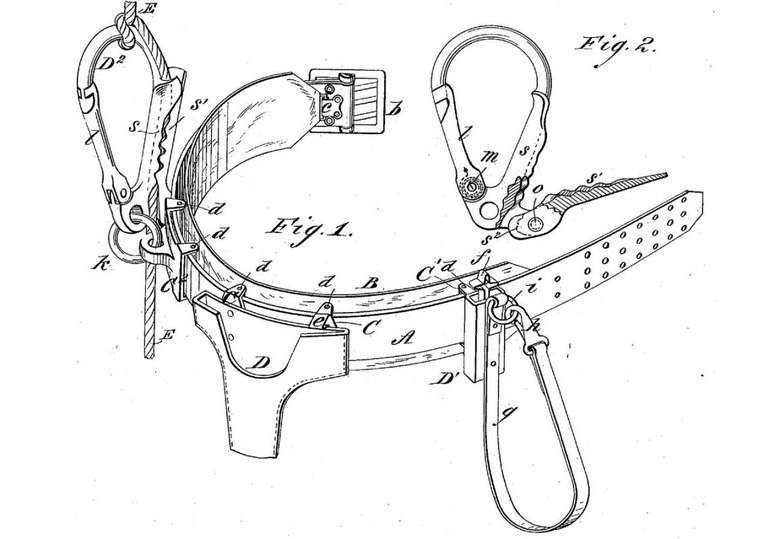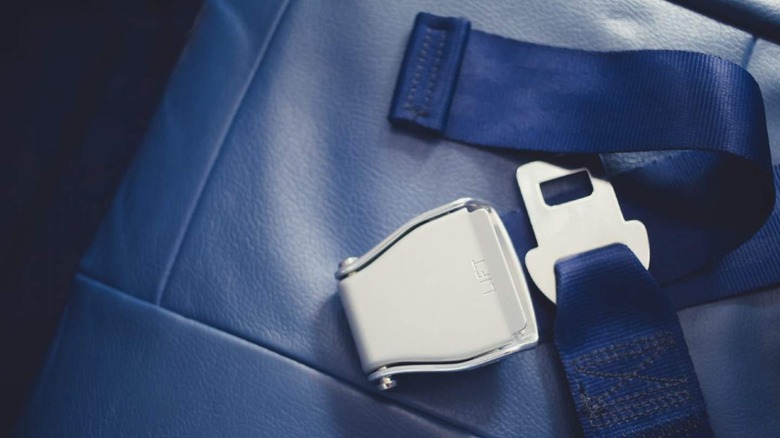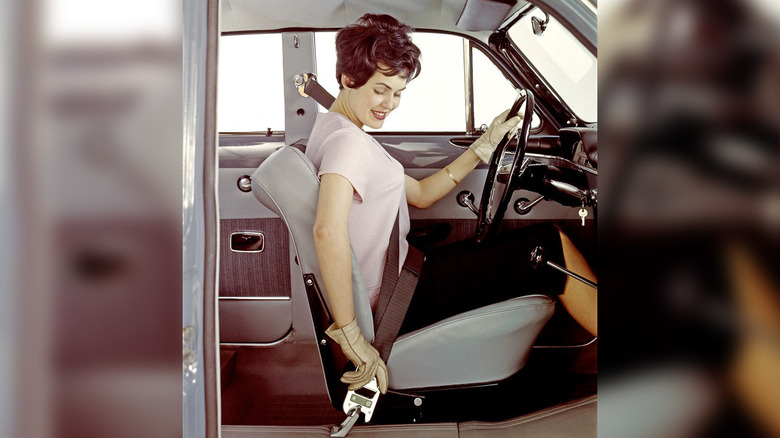What Was The First Car To Use Seat Belts?
Seat belts have proven to be an irreplaceable safety feature in vehicles. As per data from 2017 by the National Highway Traffic Safety Administration (NHTSA), 47 percent of the lives lost in motor vehicle accidents could have been saved if the driver and/or the passengers were wearing seat belts. There is no dismissing the life-saving ability of seat belts, but just in case you're wondering how this simple yet ingenious invention came to exist and what was the first car to use seat belts, we have the answers for you.
The first documented use of seat belts dates back to the mid-19th century. English engineer and aviation pioneer Sir George Cayley is known to have invented a crude seat belt. Cayley's seat belt was intended to be used by glider pilots to keep them secure mid-flight. Many online sources including WikiCars claim Volvo was the company to use a safety harness or belt in a car in the year 1849 but there is a lack of any evidence to prove that.

The first patent for anything remotely close to a seat belt was awarded to Edward J Claghorn in the US in 1885. Claghorn's invention was more of a clumsy restraint specifically for tourists in New York taxis instead of a seat belt for all passengers in a car. As per the patent application, the contraption came with hooks to secure a person against a fixed object.
Seat belts raised safety concerns
In the coming decades, two-point seat belts and lap belts became more common in aviation. Passenger flights and long-haul coaches still use lap belts that go over the waist and are connected between two points.
As per IndyStar, the first noted use of a seat belt by a car driver was in 1922 when a legendary Indianapolis 500 racer, Barney Oldfield, ordered a parachute company to create a safety restraint for his race car. The Irvin Air Chute Company, owned by Leslie Leroy Irvin who is credited to have completed the first free-fall jump using a parachute, was given the assignment. However, despite Oldfield's genius, Indy 500 racers chose to jump from a car on a collision course than remain stuck in it, and it was not until 1954 that the Sports Car Club of America made seat belts mandatory in racing events, as per DefensiveDriving.com.
American car company Nash became the first one to offer a seat belt as an optional feature in 1949 (via Wikipedia). But the initial resistance due to frequently failing buckle systems and prevention of escape led to only a few thousand of the Nash buyers using them. In 1955, Ford began offering optional seat belts but, once again, found only a few users. In the same year, Roger W Griswold and Hugh DeHaven patented (via Google Patents) a three-point seat belt that included a lap belt strapped to one that went around one of the shoulders.
The first cars with 3-point seat belts
In 1956, Dr. C. H. Sheldon, a doctor of neurology, floated the idea of retractable seat belts to help alleviate the opposition towards cumbersome safety belts, (via Capcity Law). Dr. Sheldon also contributed the ideas of recessed steering wheels and the primitive version of an airbag.
The most groundbreaking development in the history of seat belts was the invention of retractable three-point or V-shaped seat belts that we use to date. The three-point seat belt was first introduced by Volvo designer Nils Bohlin in 1958 (via Wikipedia). Bohlin benefited from his prior experience with designing safety equipment for SAAB airplanes, including ejecting seats. His design of the three-point seat belt involved a single belt that would go around the lower torso and the chest, buckle near the hip, and be applied easily singlehandedly.
In the following year (1959), Volvo started offering the three-point as a standard feature in all vehicles and Bohlin earned a patent in 1962. The first cars to be sold with three-point seat belts were the Volvo PV544 and the Amazon 120 (via Car And Driver).
Bohlin's invention could have been Volvo's golden egg-laying goose, allowing it to earn millions or billions of dollars in licensing fees and royalty. Instead, the company open-sourced the idea to the entire automobile industry, encouraging its competitors to adopt it widely. Volvo also shares data from its crash-related research from over 50 years, enabling equality when it comes to car safety.


